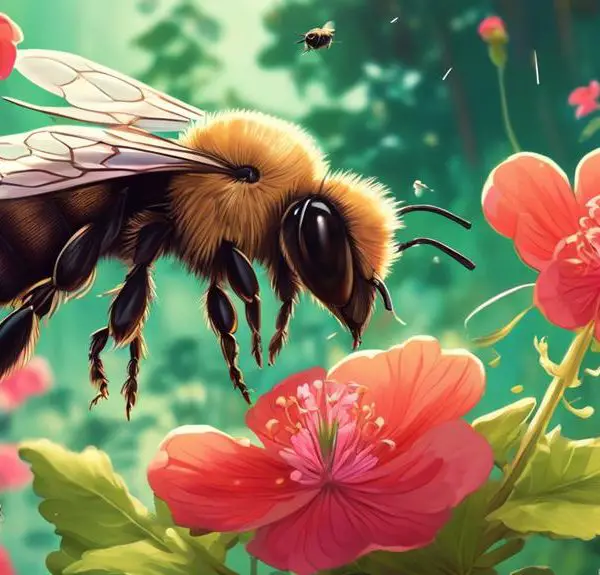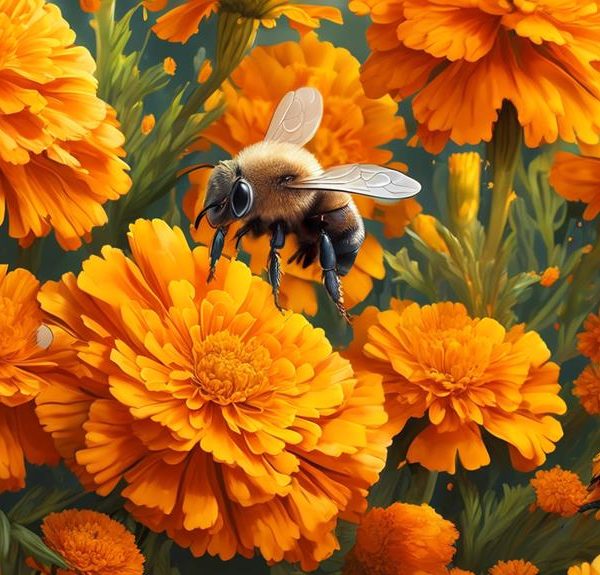Tune in to uncover whether holly trees are a preferred haunt for mason bees, an enigma that intrigues both historical homesteaders and modern gardeners.
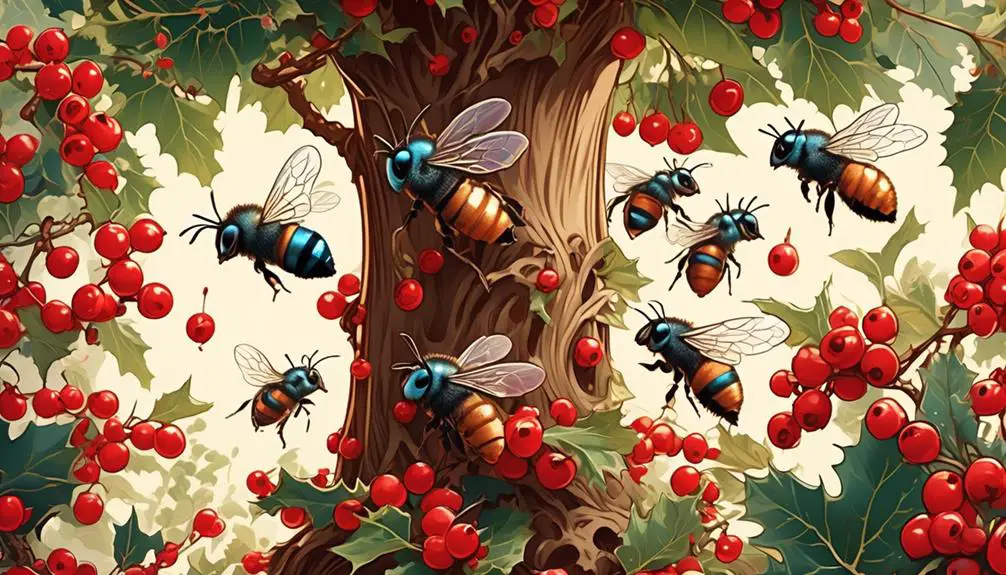
Do Mason Bees Like Holly Trees?
Imagine you're a homesteader from the colonial times, and you've just planted a row of holly trees around your humble abode. You're curious – will these trees attract those industrious mason bees you've heard so much about?
It's a question that's as relevant today as it would've been in those bygone days. Mason bees, named for their mud-caked nesting habits, are a gardener's best friend, but do they hold the same affection for holly trees?
There's a lot of ground to cover to answer this intriguing query, so why not stick around and explore together?
Key Takeaways
- Mason bees are efficient pollinators and rely heavily on holly trees for their survival and reproduction.
- Holly trees provide a rich source of nectar and pollen for mason bees, making them an attractive environment for these solitary insects.
- Including holly trees in your garden can enhance its appeal to mason bees and support their population.
- Creating a garden with a mix of sun and shade, plenty of flowering plants, and providing small cavities for nesting is important for attracting and supporting mason bees in the garden.
Understanding Mason Bees
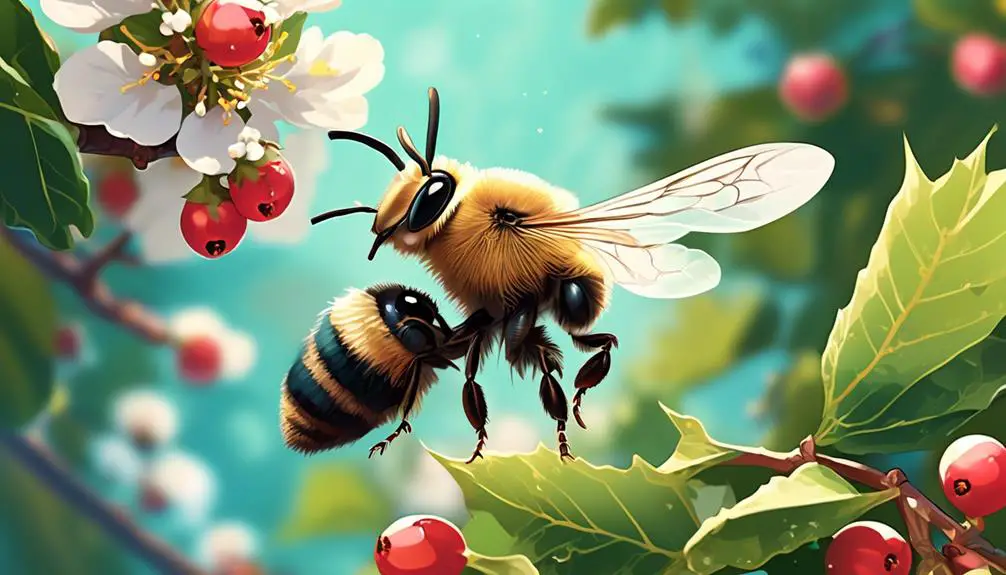
To truly appreciate the importance of mason bees in our ecosystem, you must first understand their unique biology and behavior. Unlike honeybees, mason bees are solitary insects. They don't live in hives, but instead, opt for individual nests. These nests are often made in hollow stems or holes in wood, hence the name 'mason'.
Analyzing their biology, you'll find they've a metallic blue or greenish hue and are smaller than honeybees. They're non-aggressive and only sting if threatened. You'll also see that they're incredibly efficient pollinators. A single mason bee can do the work of 100 honeybees. They achieve this efficiency by carrying pollen on their abdomen where it's more likely to rub off on flowers.
Mason bees have a fascinating life cycle too. They lay their eggs in tubes, each with a pollen loaf to feed the larva. They then seal off each chamber with mud, protecting the developing bee until it emerges as an adult.
Understanding these aspects of mason bees' biology and behavior is critical. It allows you to appreciate their role in our ecosystem and their potential impact on our future.
The Appeal of Holly Trees
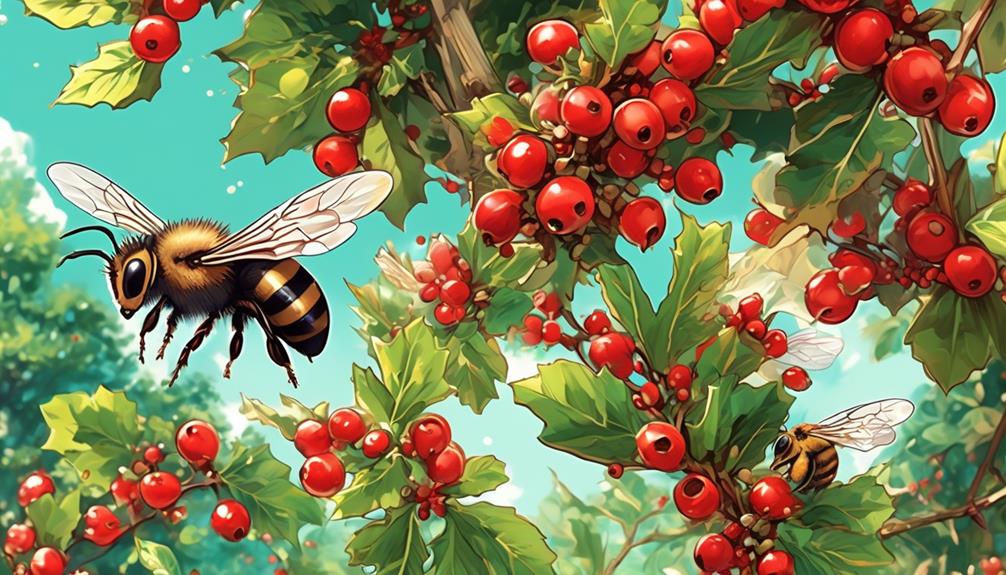
Delving into the world of holly trees, you'll find they boast a unique appeal, characterized by their glossy evergreen leaves, vibrant red berries, and remarkable adaptability. These trees are not just aesthetically pleasing, but they're also highly functional, providing shelter and food for various species, including birds and insects.
Holly trees thrive in a wide range of soils and climates, which enhances their appeal. They're resilient, hardy, and can withstand harsh winters, making them a practical choice for many gardeners and landscapers. Their bright red berries, which appear in fall and persist into winter, add a pop of color to any landscape and serve as an essential food source for wildlife.
To better understand the appeal of holly trees, take a look at the table below:
Feature | Benefit | Impact |
|---|---|---|
Evergreen Leaves | Year-round color | Enhances landscape aesthetics |
Red Berries | Food source for wildlife | Supports biodiversity |
Adaptability | Grows in various climates | Suitable for different regions |
Resilience | Withstands harsh conditions | Low-maintenance |
Shelter Provider | Houses various species | Promotes ecological balance |
Mason Bees' Feeding Habits

Interestingly, a majority of mason bees' diet consists of nectar and pollen from a variety of flowering plants, including the holly tree. You may wonder why this is significant. Well, the nutritional composition of these food sources shapes the bees' survival and reproductive success.
Primarily, mason bees consume nectar for its high sugar content, providing them with the energy they need for daily activities. They're not picky eaters, and will feed on nectar from various plant species. However, they show a marked preference for certain plants, holly trees being one of them.
On the other hand, pollen plays a crucial role in their life cycle. Females collect and store pollen in their nests to feed their developing larvae. This is where the holly tree comes into play. Its flowers produce large quantities of pollen, making it a valuable food source for mason bees.
Holly Trees and Mason Bees Interaction

Building on the importance of holly trees in the diet of mason bees, let's now explore the intriguing interaction between these bees and their favored plant. Holly trees offer a rich source of nectar and pollen, which is vital for the mason bees' reproduction and energy.
As you observe a holly tree during the blooming season, you'll notice mason bees buzzing with activity. Their mutualism is evident: the bees get nourishment, and in return, they play a crucial role in the holly tree's pollination process.
Let's delve deeper into this interaction by examining the table below:
Behavior | Mason Bee | Holly Tree |
|---|---|---|
Feeding | Extracts nectar and pollen | Provides food source |
Nesting | Prefer cavities in wood | Not applicable |
Reproduction | Needs pollen for egg-laying | Requires cross-pollination |
Activity | Diurnal (active in daytime) | Blooms in daylight |
Dependency | Relies heavily on holly trees | Depends on bees for pollination |
This symbiotic relationship is a fascinating showcase of nature's balance. It's evident that the survival and propagation of both species are interlinked, demonstrating the critical role mason bees play in maintaining the health and diversity of our ecosystems.
Enhancing Your Garden for Mason Bees
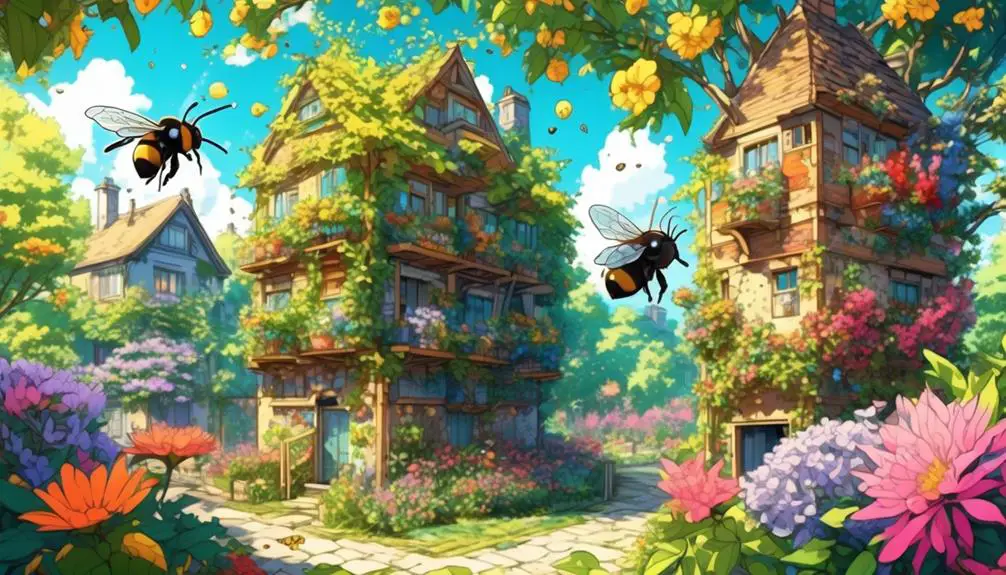
To attract and support mason bees in your garden, it's important to understand their habitat preferences and dietary needs, which center largely around holly trees. These bees prefer areas with a mix of sun and shade, with plenty of flowering plants for nectar and pollen. Holly trees, known for their plentiful blooms and dense foliage, provide a perfect environment for these industrious insects.
To maximize the attractiveness of your garden for mason bees, include a variety of plants that bloom at different times of the year. This ensures a steady supply of nectar and pollen, vital for the bees' sustenance. Holly trees, which bloom in spring, can be complemented with late-blooming plants like asters and goldenrods.
Moreover, mason bees require small cavities for nesting. You can provide these by leaving dead wood in your garden or by installing bee houses. Also, avoid the use of pesticides, which can be harmful to these beneficial insects.
Conclusion
In conclusion, you'll find that Mason bees don't have a preference for holly trees. They're more attracted to native flowering plants. However, holly trees can indirectly benefit them by attracting other pollinators.
So, if you're keen on helping these industrious insects, focus on planting a diverse range of native blooms. Remember, promoting a bee-friendly environment isn't just about the bees; it's about fostering an ecosystem where all pollinators can thrive.

